Introduction
Compilation vs Interpretation
You may have heard of the distinction, but what does it actually mean?
With a compiled language, we compile everything into bytecode before running anything
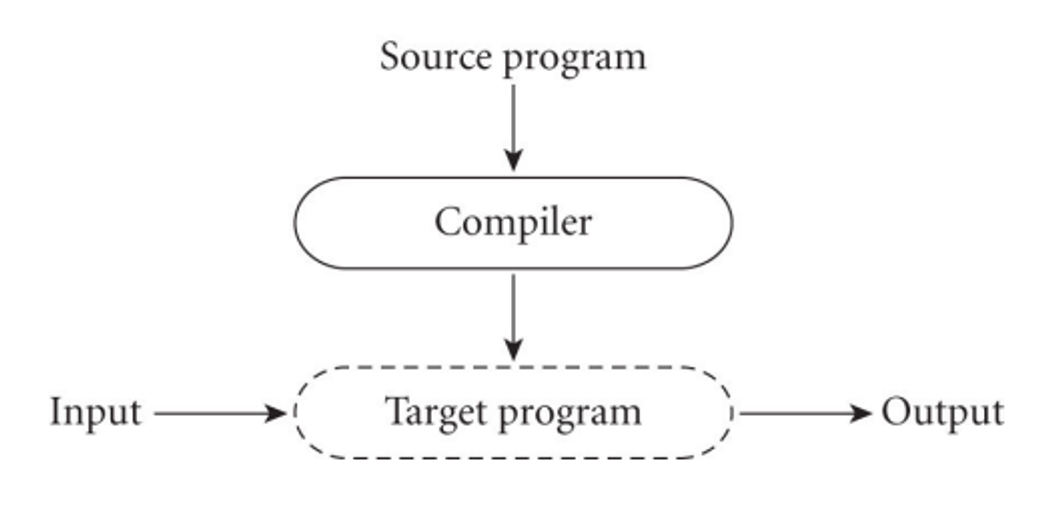

With interpreted languages on the other hand, we have an interpreter throughout the program’s runtime translating each instruction into bytecode as it goes along
With compilation, we get better performance since we don’t have the bloat of an interpreter, but interpretation gives us greater flexibility and better diagnostics
- For example, Prolog can write new pieces and execute them on the fly
These aren’t mutually exclusive, however; you can have a system where we compile and then interpret
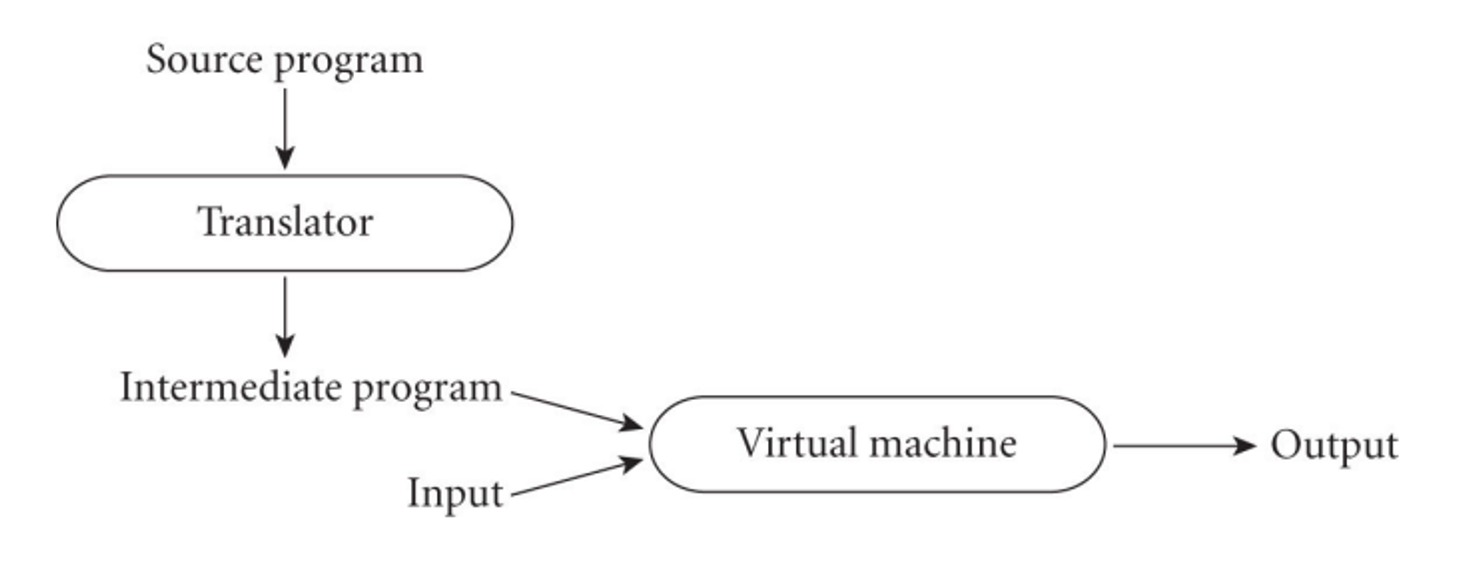
To put things more specifically, compilation is translation from one language into another, with full analysis of the meaning of the input
This entails semantic understanding of what is being processed, while pre-processing simply removes comments and white space while grouping characters into tokens, expanding abbreviations and maybe identifying loops or subroutines
- Preprocessors are more common for interpreted languages, but they also exist in C/C++

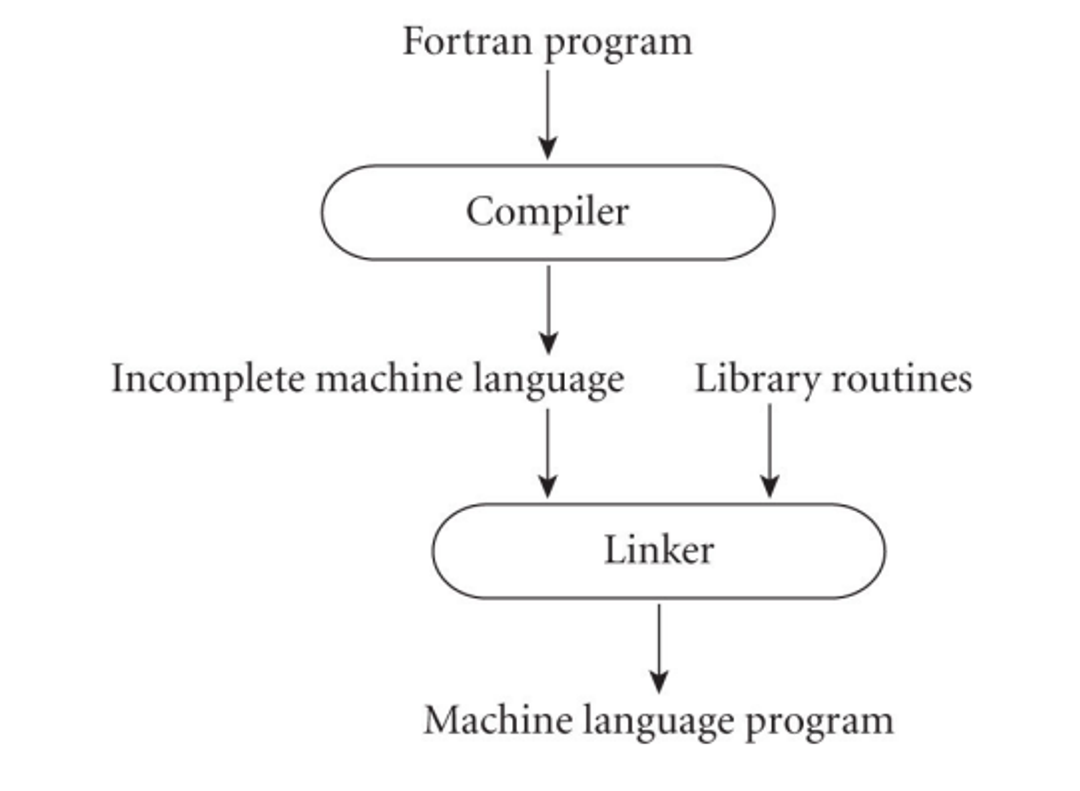
We can also use a linker to merge libraries of subroutines (ex. math functions like log) into the final program
We can also compile languages that are considered ‘interpreted’ since interpretation/compilation is actually a property of implementation
The compiler, in this case, will generate code that makes assumptions and runs very fast if the assumptions are valid
- If they aren’t valid, we can dynamically check with an interpreter
Another more modern way of approaching things is Just-In-Time (JIT) compilation, where we delay compilation until the last second
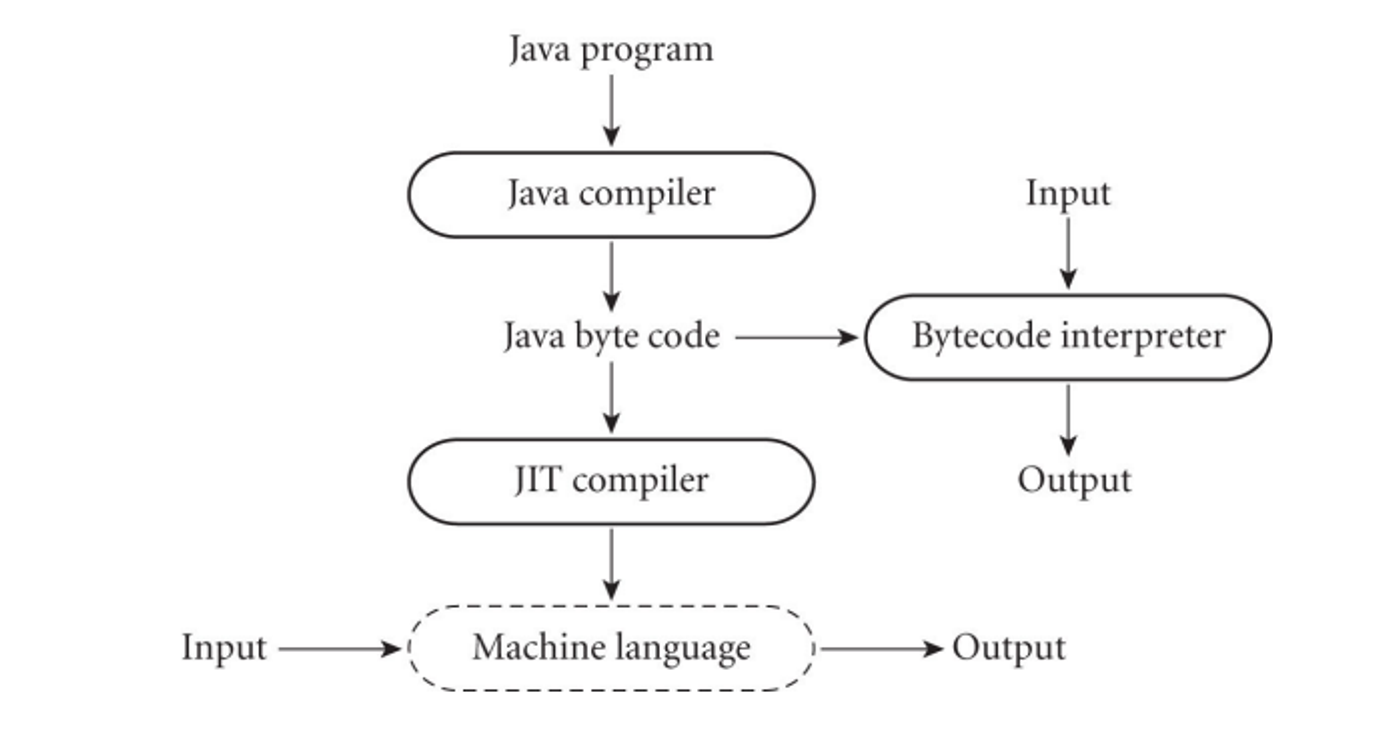
Some more unconventional compilers include text formatters that compile high-level document (Latex) and query language processors that translate into primitive operations on files (SQL)
- There’s also tools in IDEs that are separate from this, including debuggers, version management and profilers for performance analysis
Compilation/Interpretation Phases
Compilation is handled in several steps
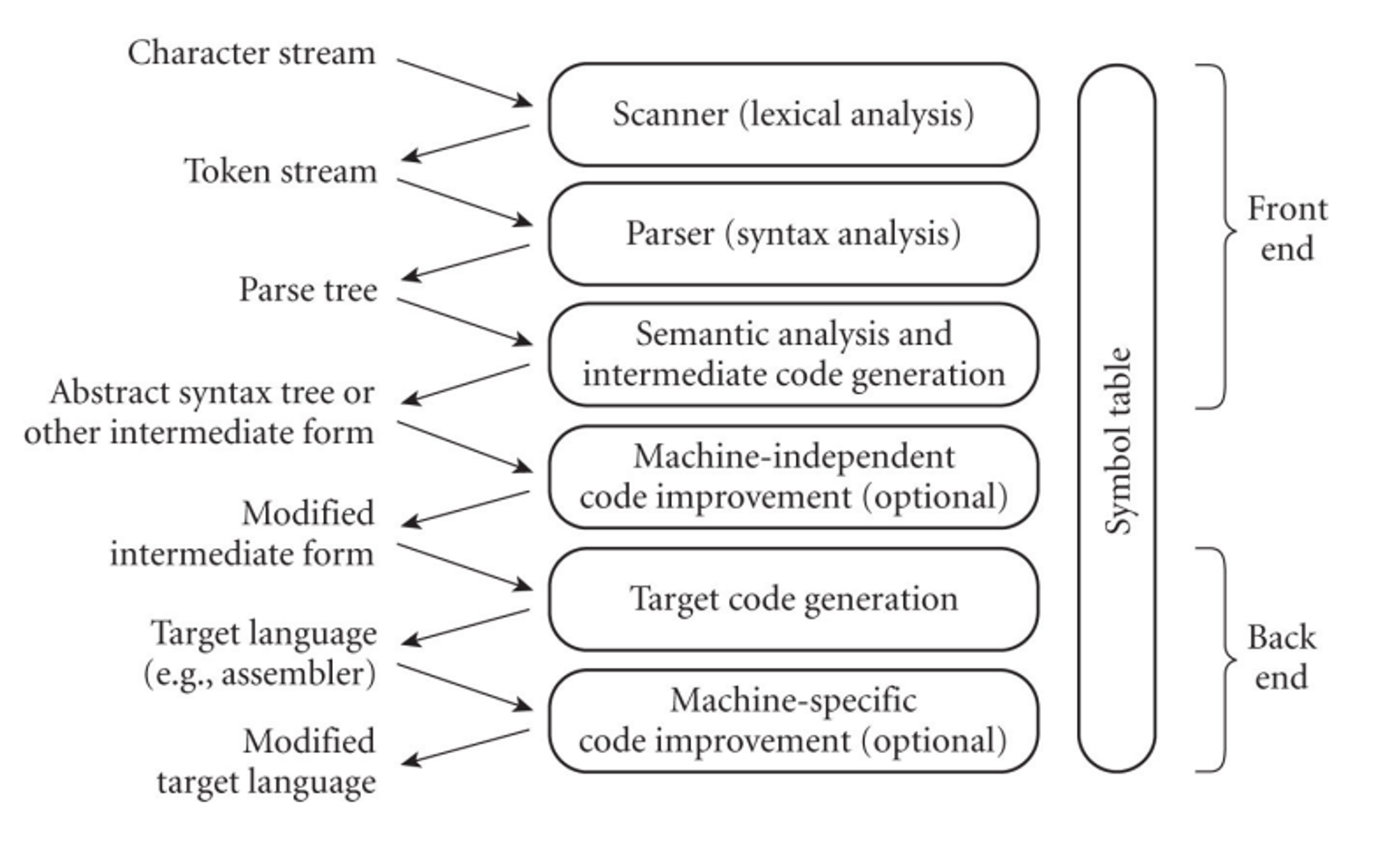
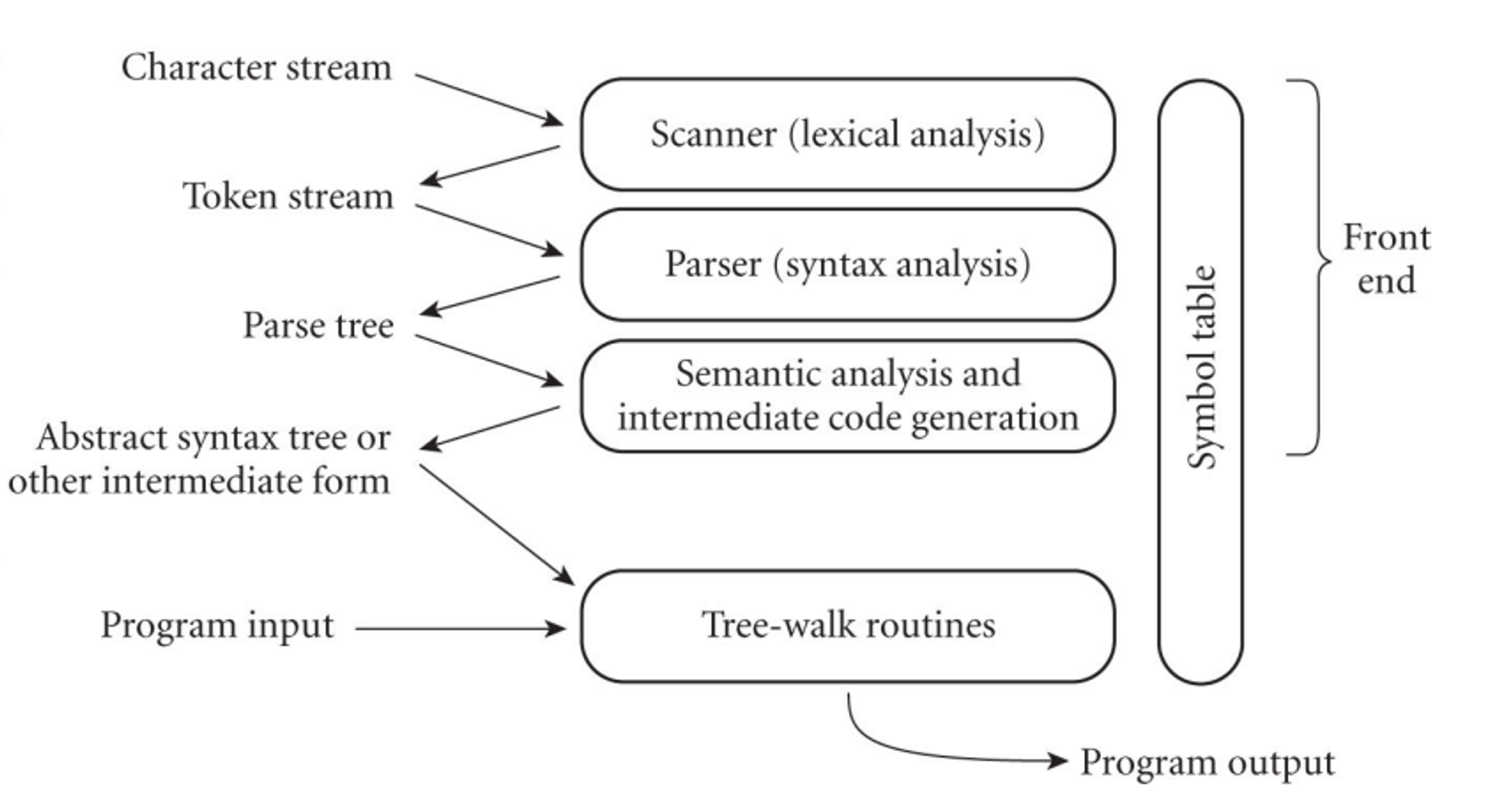
For interpretation, things are cut short a little bit
In the scanner, we divide the program into token, which are the smallest meaningful units, saving time since char-by-char is very slow
- This is done using a deterministic finite automata (DFA)
Scanning
C Program (computes GCD):
int main() {
int i = getint(), j = getint();
while (i != j) {
if (i > j) i = i - j;
else j = j - i;
}
putint(i);
}
Input – sequence of characters:
‘i’, ‘n’, ‘t’, ‘ ’, ‘m’, ‘a’, ‘i’, ‘n’, ‘(’, ‘)’ ...
Output – tokens:
int, main, (, ), {, int, i, =, getint, (, ), ,, j, =, getint, (, ), ;, while, (, i, !=, j, ), {, if, (, i, >, j, ), i, =, i, -, j, ;, else, j, =, j, -, i, ;, }, putint, (, i, ), ;, }
On parsing, we check the syntax of the program to make sure the grammar is being adhered to, which is done via a pushdown automata (PDA)
This parsing organizes tokens into a parse tree as defined by a context free grammar (CFG)
Parsing
Example – while loop in C
Context-free grammar (part of):
iteration-statement → while ( expression ) statement
statement → { block-item-list-opt }
block-item-list-opt → block-item-list | ε
block-item-list → block-item block-item-list → block-item-list block-item
block-item → declaration block-item → statement
Parse tree for GCD program
- based on full context-free grammar
From here, our previous GCD example can be split up into a parse tree
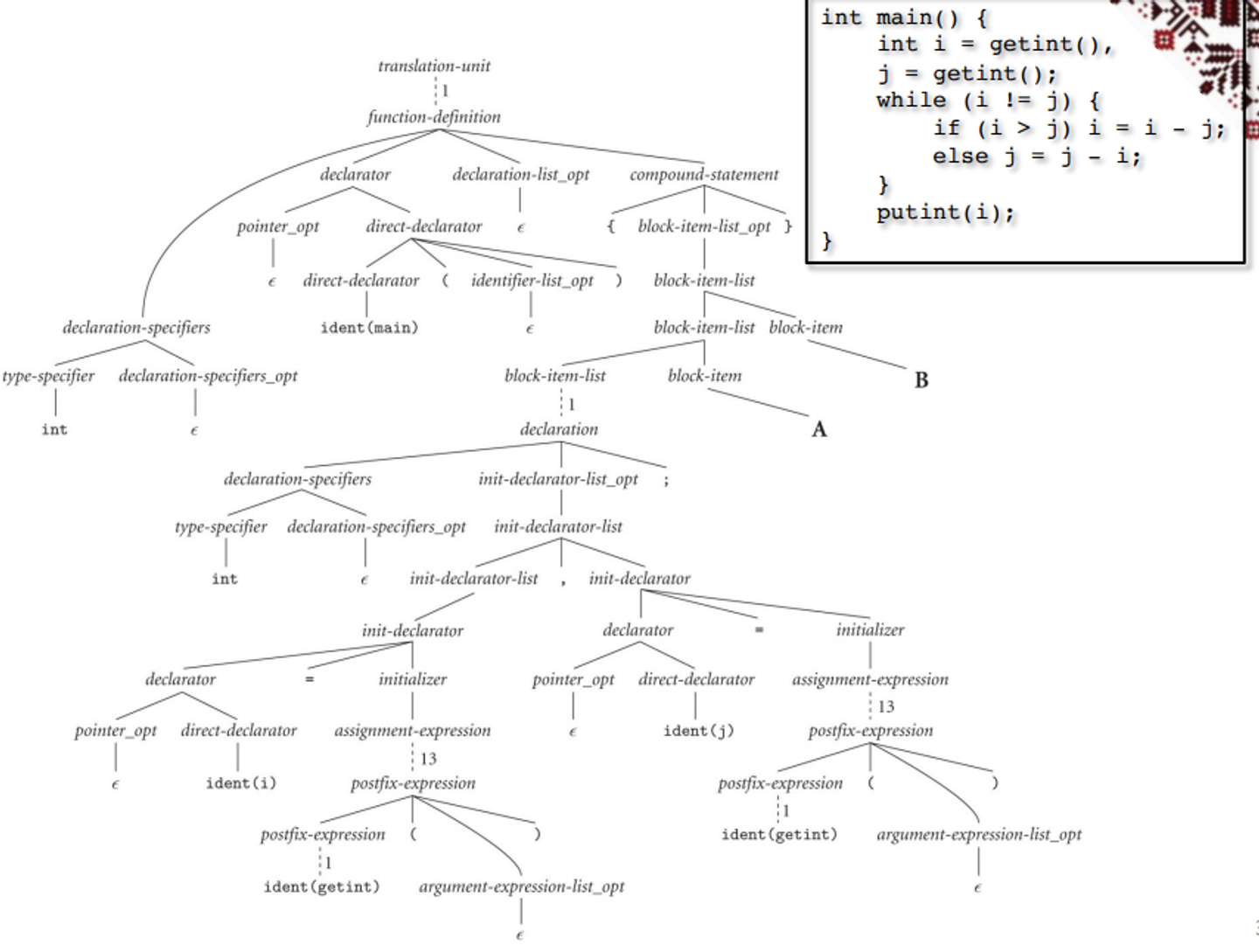

- You can go through the leaves left-first to read out the entire program
With semantic analysis, we discover the meaning in the program, detecting multiple occurrences of the same identifier and tracking the types of identifiers and expressions
From here, we can build and maintain a symbol table mapping each identifier to its information (type, scope, structure, etc.)
The compiler can only handle static semantic analysis, since dynamic semantics must be checked at run time
- These dynamic checks are pretty slow, so we need to make a trade off between safety and speed (this is what makes C so fast; dynamic checks are few and far in between)
This semantic analysis produces a syntax tree, removing some of the more “useless” internal nodes that are present in the parse tree and annotates the remaining nodes with attributes

Finally, we have code generation which uses interpreters to run the syntax tree and target code generation which then produces assembly
Assembly Code for GCD Program
pushl %ebp # \
movl %esp, %ebp # ) reserve space for local variables
subl $16, %esp # /
call getint # read
movl %eax, -8(%ebp) # store i
call getint # read
movl %eax, -12(%ebp) # store j
A:
movl -8(%ebp), %edi # load i
movl -12(%ebp), %ebx # load j
cmpl %ebx, %edi # compare
je D # jump if i == j
movl -8(%ebp), %edi # load i
movl -12(%ebp), %ebx # load j
cmpl %ebx, %edi # compare
jle B # jump if i < j
movl -8(%ebp), %edi # load i
movl -12(%ebp), %ebx # load j
subl %ebx, %edi # i = i - j
movl %edi, -8(%ebp) # store i
jmp C
B:
movl -12(%ebp), %edi # load j
movl -8(%ebp), %ebx # load i
subl %ebx, %edi # j = j - i
movl %edi, -12(%ebp) # store j
C:
jmp A
D:
movl -8(%ebp), %ebx # load i
push %ebx # push i (pass to putint)
call putint # write
addl $4, %esp # pop i
leave # deallocate space for local variables
mov $0, %eax # exit status for program
ret # return to operating system
Corresponding C Program:
int main() {
int i = getint(), j = getint();
while (i != j) {
if (i > j) i = i - j;
else j = j - i;
}
putint(i);
}
This is a bit of a naive solution that can definitely be approved upon, so our final step is to find these optimizations to either do things faster or take less space
Assembly Code Example
pushl %ebp
movl %esp, %ebp
pushl %ebx
subl $4, %esp
andl $-16, %esp
call getint
movl %eax, %ebx
call getint
cmpl %eax, %ebx
je C
A:
cmpl %eax, %ebx
jle D
subl %eax, %ebx
B:
cmpl %eax, %ebx
jne A
C:
movl %ebx, (%esp)
call putint
movl -4(%ebp), %ebx
leave
ret
D:
subl %ebx, %eax
jmp B